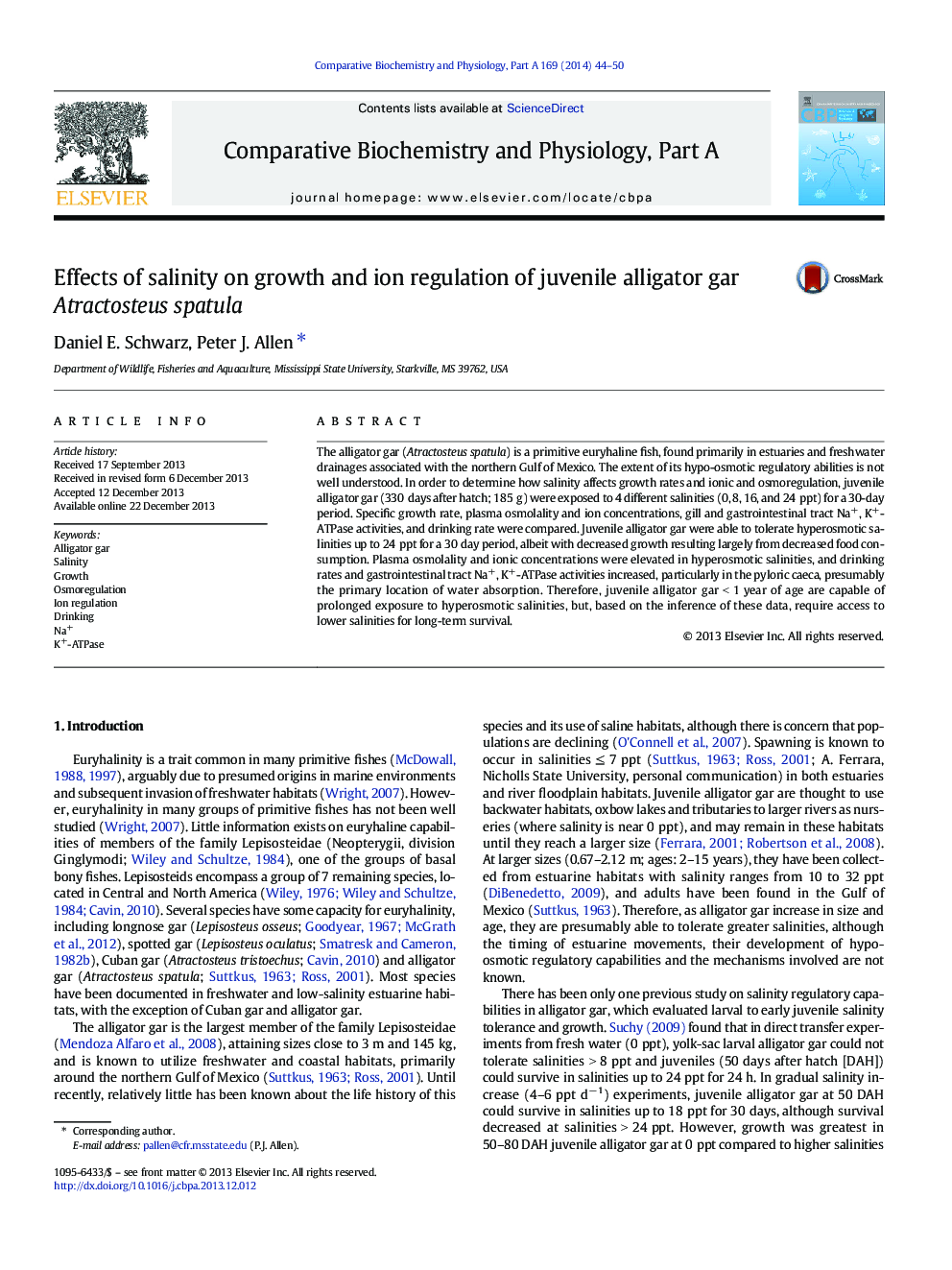| Article ID | Journal | Published Year | Pages | File Type |
|---|---|---|---|---|
| 1972276 | Comparative Biochemistry and Physiology Part A: Molecular & Integrative Physiology | 2014 | 7 Pages |
The alligator gar (Atractosteus spatula) is a primitive euryhaline fish, found primarily in estuaries and freshwater drainages associated with the northern Gulf of Mexico. The extent of its hypo-osmotic regulatory abilities is not well understood. In order to determine how salinity affects growth rates and ionic and osmoregulation, juvenile alligator gar (330 days after hatch; 185 g) were exposed to 4 different salinities (0, 8, 16, and 24 ppt) for a 30-day period. Specific growth rate, plasma osmolality and ion concentrations, gill and gastrointestinal tract Na+, K+-ATPase activities, and drinking rate were compared. Juvenile alligator gar were able to tolerate hyperosmotic salinities up to 24 ppt for a 30 day period, albeit with decreased growth resulting largely from decreased food consumption. Plasma osmolality and ionic concentrations were elevated in hyperosmotic salinities, and drinking rates and gastrointestinal tract Na+, K+-ATPase activities increased, particularly in the pyloric caeca, presumably the primary location of water absorption. Therefore, juvenile alligator gar < 1 year of age are capable of prolonged exposure to hyperosmotic salinities, but, based on the inference of these data, require access to lower salinities for long-term survival.
